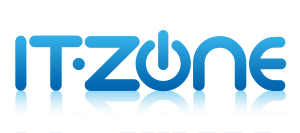Computer Security
Ultimate Guide to Data Encryption for Small Businesses
Ultimate Guide to Data Encryption for Small Businesses
Data encryption is essential for protecting your business from cyberattacks, which affect 70% of small businesses – 60% of which shut down within six months of a breach. This guide explains how encryption works, the risks of skipping it, and practical steps to secure your data. Here’s a quick overview:
- What is Encryption? Converts readable data into unreadable formats using cryptographic keys.
- Why It Matters: Prevents data breaches, protects sensitive information, and builds customer trust.
- Types of Encryption:
- Symmetric: Fast, uses one key for encryption and decryption.
- Asymmetric: Slower but more secure, uses public and private key pairs.
- Key Standards: AES (for data storage) and RSA (for secure communications).
- How to Start:
Quick Tip: Combine encryption with employee training, multi-factor authentication, and regular security audits to minimize risks.
The business owner’s guide to data encryption
Core Encryption Concepts
Understanding encryption is crucial for small business owners looking to protect their data. Let’s break down the key concepts you need to know.
Encryption Process Explained
Encryption is the process of converting readable data, or plaintext, into an unreadable format called ciphertext using a unique key. As Chrissy Kidd from Splunk Blogs puts it:
"Encryption turns plaintext (readable data) into ciphertext (randomized data), which requires the use of a unique cryptographic key for interpretation." [2]
In simple terms, encryption scrambles your data using advanced algorithms and a specific key. Without the right key, the scrambled data remains locked and inaccessible. Now, let’s look at the two main types of encryption and how they’re applied.
2 Main Encryption Types
Small businesses rely on two primary encryption methods:
| Feature | Symmetric Encryption | Asymmetric Encryption |
|---|---|---|
| Key Usage | One key for both encryption and decryption | Two keys: public (encrypt) and private (decrypt) |
| Speed | Fast, suitable for large data sets | Slower, ideal for small data |
| Security Level | Effective but requires secure key sharing | Higher security due to separate keys |
| Resource Usage | Low system demands | Higher resource requirements |
| Common Uses | File storage, database encryption | Email security, digital signatures |
A common example of these methods working together is in website security. When you visit a secure website, your browser uses asymmetric encryption to establish a secure connection. Once the connection is set up, it switches to faster symmetric encryption for ongoing data transfers. This combination ensures both speed and security.
Common Encryption Standards
Widely accepted standards like AES and RSA form the backbone of data encryption:
Advanced Encryption Standard (AES)
AES is the go-to symmetric encryption method for protecting data worldwide. It offers varying levels of security through different key lengths:
- 128-bit keys: 10 encryption rounds
- 192-bit keys: 12 encryption rounds
- 256-bit keys: 14 encryption rounds
RSA (Rivest-Shamir-Adleman)
RSA is an asymmetric encryption standard, perfect for securing small amounts of sensitive data and creating digital signatures. Its much longer key lengths (2048 bits or more) provide strong security but make it slower compared to AES.
"Data encryption refers to the procedure or process of scrambling plaintext data into a complex undecipherable format known as ciphertext." – Riya Sander, Infosec [1]
The strength of encryption depends on the key length and the algorithm used. For most small businesses, AES-256 is a reliable choice for securing stored data, while RSA is excellent for secure communications and authentication tasks. These principles lay the groundwork for implementing effective encryption in your business.
Setting Up Business Encryption
Encryption is essential for safeguarding devices, communications, and cloud storage in any business. Here’s how to get started.
Device Encryption Setup
Modern operating systems come with built-in encryption tools. Here’s how to secure devices commonly used in business environments:
Windows Systems
For Windows 10 Pro, Enterprise, and Education editions, BitLocker provides full-disk encryption. Windows Home users can use Device Encryption if supported. To enable BitLocker:
- Go to Settings > System > About.
- Click on BitLocker settings.
- Select the drive and click Turn on BitLocker.
- Save your recovery key securely – either print it or store it in your Microsoft account.
macOS Protection
Activate FileVault by navigating to System Settings > Privacy & Security. Make sure to store the recovery key in a safe place.
Mobile Device Security
Most smartphones today come with built-in encryption. Ensure it’s enabled:
| Device Type | Encryption Path | Extra Security Features |
|---|---|---|
| iOS | Automatic with passcode | Biometric lock |
| Android | Settings > Security | Biometric lock |
| Business Tablets | Device-specific settings | Use MDM solutions |
Secure Communication Setup
Protecting email and messaging platforms is crucial, especially since human error accounts for 85% of data breaches [4]. Here’s how to enhance communication security:
Email Security
- Use end-to-end encryption for all business emails.
- Enable multi-factor authentication (MFA), which blocks 99.9% of automated attacks [4].
- Deploy secure email gateways for added protection.
Messaging Platforms
- Choose apps with built-in encryption.
- Turn on two-factor authentication (2FA).
- Regularly update apps to apply security patches.
- Train employees on secure messaging practices and establish clear policies.
By securing your communications, you also create a strong foundation for protecting cloud infrastructure.
Cloud Storage Security
With devices and communications secured, focus on encrypting your cloud storage. Here are some trusted providers and their strengths:
| Provider | Best For | Key Security Features |
|---|---|---|
| Egnyte | GDPR/HIPAA compliance | Advanced access controls |
| Microsoft OneDrive | Microsoft 365 integration | Azure AD support |
| IDrive Team | Budget-friendly backup | Cloud-to-cloud backup |
| Google Drive | Google Workspace users | Advanced sharing controls |
To secure your cloud storage:
- Enable multi-factor authentication.
- Encrypt data during transit and while stored.
- Set up strict access controls.
- Regularly monitor activity logs.
- Perform periodic security reviews to identify vulnerabilities.
These steps ensure your business data remains protected at every level.
sbb-itb-3b11325
Solving Common Encryption Problems
As cyber threats grow, training your team and managing encryption keys effectively can strengthen your business’s defenses. Small businesses are particularly vulnerable, with 73% reporting cyberattacks in the past year [7].
Affordable Security Solutions
Recovering from a ransomware attack costs small businesses an average of £165,520 [6]. Here are some budget-friendly tools to help you stay secure:
- DUO Security: Free multi-factor authentication for teams with fewer than 10 users [5].
- Open-source tools: Options like Snort and OSSEC offer solid protection [8].
- Built-in OS encryption: Leverage encryption tools already included in your operating system.
These tools provide a strong foundation for improving security without breaking the bank.
Employee Security Training
Did you know that about one-third of phishing emails are opened [5]? This highlights the need for proper training. Focus on key topics like:
- Recognizing and avoiding phishing attempts.
- Managing passwords securely.
- Handling sensitive data correctly.
- Using encryption tools effectively.
- Reporting incidents promptly.
"Prevention is far cheaper than recovery, and even small steps can have a big impact." [8]
To implement this, consider monthly training sessions, quarterly phishing simulations, and regular knowledge checks. These steps can make a big difference in reducing human error.
Protecting Encryption Keys
Encryption is only as strong as the keys protecting it. NIST guidelines stress safeguarding keys from unauthorized access or tampering [10]. Follow these practices:
- Use strong, random methods to generate keys, store them securely, and limit access based on the principle of least privilege.
- Rotate keys regularly, back them up securely offline, and test recovery procedures every quarter.
"Ultimately, the security of information protected by cryptography directly depends on the strength of the keys, the effectiveness of cryptographic mechanisms and protocols associated with the keys, and the protection provided to the keys." [10]
Monitor key usage and maintain an updated inventory to ensure ongoing security.
With 47% of small businesses experiencing at least one cyberattack last year [6], adopting these strategies can help you minimize risks while keeping costs manageable.
Encryption Tools and Services
Small businesses are increasingly targeted by cyberattacks – 42% of all data breaches involve SMBs [11]. Protect your business with the right encryption tools and services.
Classic Shop – ITZONE Online

Classic Shop – ITZONE Online provides hardware solutions and PC services designed with security in mind. Their refurbished systems come equipped with modern encryption capabilities. Additionally, they offer dedicated encryption software to keep your data protected.
Small Business Encryption Software
There are plenty of encryption tools available to suit various needs and budgets. Here are some top-rated options:
| Software | Rating | Key Features | Price |
|---|---|---|---|
| AxCrypt Premium | 4.5/5 | Public key sharing, seamless file editing | £45/year |
| Folder Lock | 4.5/5 | File shredding, secure backup, file locking | £39.99 (one-time) |
| Xecrets Ez Premium | 4.5/5 | Offline operation, simplified interface | £15.00 (one-time) |
| NordLocker | 4.0/5 | Unlimited local storage, secure sharing | £2.99/month |
AxCrypt Premium stands out for its ease of use and strong security features. For those on tighter budgets, free tools like BitLocker or 7-Zip offer basic file encryption without compromising safety.
"To have a tool like Virtru that we could roll out ourselves, that didn’t require a lot of work to put it in the hands of our users, was an advantage."
Professional Security Services
If in-house solutions aren’t enough, professional services can provide additional support. Managed encryption services handle key management and updates, while security consultants create tailored solutions. Training services are also essential to help staff understand and avoid common threats.
With 82% of data breaches involving human error [11], these services can make a real difference. Encryption is just one part of a broader security strategy. As Max Eddy, a security expert, reminds us:
"A back door is still a door, and even a door with a lock on it can be opened" [9].
Getting Started with Encryption
Main Points Review
Encryption helps protect your business from cyber threats by securing data both when stored and during transmission. It also relies on effective key management practices [13].
For small businesses, safeguarding sensitive information – like customer data, financial records, and intellectual property – is crucial. Experts emphasize the importance of combining the right tools, employee training, and clear protocols when implementing encryption.
"Encryption preserves data confidentiality and reinforces cybersecurity." – Waident Technology Solutions
These basics will help you create a solid encryption strategy.
Creating Your Security Plan
Start by evaluating your digital assets to pinpoint critical data. Use this framework to guide your efforts:
| Phase | Key Actions | Timeline |
|---|---|---|
| Assessment | Identify critical data and systems | Week 1-2 |
| Technical Setup | Install encryption tools and configure settings | Week 3-4 |
| Training | Educate employees on encryption practices | Week 5-6 |
| Monitoring | Conduct regular audits and updates | Ongoing |
In addition to encryption, adopt strong password policies, enable two-factor authentication, and secure your Wi-Fi networks [12]. Make sure all devices have updated security software and operating systems [3].
Help and Information
Once your plan is in place, take advantage of available resources to enhance your encryption efforts. For example, the FCC Small Biz Cyber Planner 2.0 provides tailored cybersecurity planning tools, and the Global Cyber Alliance (GCA) offers a free cybersecurity toolkit designed for small businesses [3]. Other helpful resources include NIST’s Small Business Cybersecurity Corner, FTC’s Cybersecurity for Small Business guides, and the National Cyber Security Alliance (NCSA) resources for SMBs.

